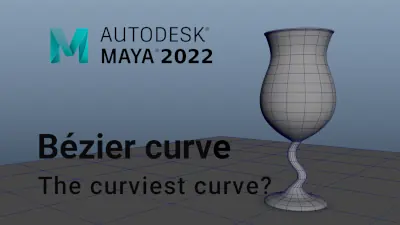Introduction to Maya - Modeling Fundamentals Vol 1
This course will look at the fundamentals of modeling in Maya with an emphasis on creating good topology. We'll look at what makes a good model in Maya and why objects are modeled in the way they are.
#
16
31-07-2006
, 01:17 PM
Subscriber
Join Date: Dec 2005
Join Date: Dec 2005
Location: Boston
Posts: 339
Lamborghini Mucielago
Ferrari Modena 360
I create feeling in others that they themseleves don’t understand.
#
17
31-07-2006
, 01:20 PM
Subscriber
Join Date: Dec 2005
Join Date: Dec 2005
Location: Boston
Posts: 339
Lamborghini Mucielago
Ferrari Modena 360
I create feeling in others that they themseleves don’t understand.
#
18
31-07-2006
, 01:27 PM
Subscriber
Join Date: Nov 2004
Join Date: Nov 2004
Posts: 1,043
Last edited by mmoore5553; 31-07-2006 at 01:50 PM.
#
19
31-07-2006
, 02:06 PM
Subscriber
Join Date: Dec 2005
Join Date: Dec 2005
Location: Boston
Posts: 339
Lamborghini Mucielago
Ferrari Modena 360
I create feeling in others that they themseleves don’t understand.
#
20
31-07-2006
, 02:07 PM
if u want to render it try render layers
so put tread on wone
brakes on another
an rims on another ect
this should allow u to render it fully
Now at SMU doing BSc 3D Computer Animation so its hard to get on here
My wire render tut https://forum.simplymaya.com/showthre...threadid=20973
#
21
31-07-2006
, 02:21 PM
Subscriber
Join Date: Dec 2005
Join Date: Dec 2005
Location: Boston
Posts: 339
Lamborghini Mucielago
Ferrari Modena 360
I create feeling in others that they themseleves don’t understand.
#
22
01-08-2006
, 12:51 AM
There's no reason why you shouldn't be able to render that scene though. I'm using only 2 gigs of Ram, with a dual-core processor, and I've managed to render all my more complicated scenes so far. You probably just need to adjust your modeling to use less polys in your base mesh.
Last edited by dilberts; 01-08-2006 at 12:57 AM.
#
23
01-08-2006
, 01:06 AM
Subscriber
Join Date: Dec 2005
Join Date: Dec 2005
Location: Boston
Posts: 339
Lamborghini Mucielago
Ferrari Modena 360
I create feeling in others that they themseleves don’t understand.
#
24
01-08-2006
, 01:09 AM
Subscriber
Join Date: Dec 2005
Join Date: Dec 2005
Location: Boston
Posts: 339
Lamborghini Mucielago
Ferrari Modena 360
I create feeling in others that they themseleves don’t understand.
#
25
01-08-2006
, 04:38 AM
You can also try messing with the BSP structure, and memory settings in the Render Globals. Also, try decreasing the anti-aliasing a little. Often I find that the "Production" default settings are overkill for a quality still image. Also, reflections and refractions can effect the render hugely. The default settings of "10" reflections and refractions is too high for most images (unless you have a lot of glass). Most of the time I reduce them to around 6, and that alone decreases your render time. Optimizing a render can take a long time, but it's often necessary if you don't have access to a supercomputer.
This was my last poly wheel and tire. It was smoothed at level 2, and renders in just a few minutes, and my PC stats are lower than yours. If you try some of the things I mentioned, I'm sure you'll be able to get it to render.
#
26
17-08-2006
, 08:42 PM
Subscriber
Join Date: Feb 2006
Join Date: Feb 2006
Posts: 1,937
#
27
18-08-2006
, 02:24 AM
Subscriber
Join Date: Dec 2005
Join Date: Dec 2005
Location: Boston
Posts: 339
Lamborghini Mucielago
Ferrari Modena 360
I create feeling in others that they themseleves don’t understand.
Posting Rules Forum Rules
Topics
Free Courses
Full Courses
VFX News
How computer animation was used 30 years ago to make a Roger Rabbit short
On 2022-07-18 14:30:13
Sneak peek at Houdini 19.5
On 2022-07-18 14:17:59
VFX Breakdown The Man Who Fell To Earth
On 2022-07-15 13:14:36
Resident Evil - Teaser Trailer
On 2022-05-13 13:52:25
New cloud modeling nodes for Bifrost
On 2022-05-02 20:24:13
MPC Showreel 2022
On 2022-04-13 16:02:13









